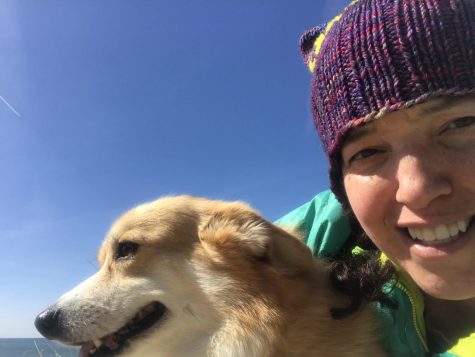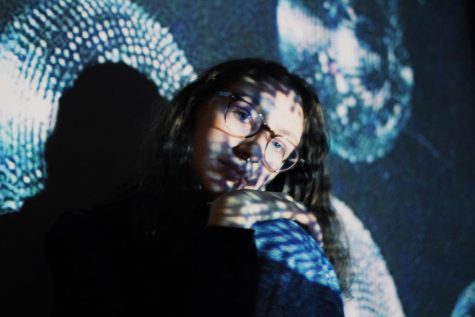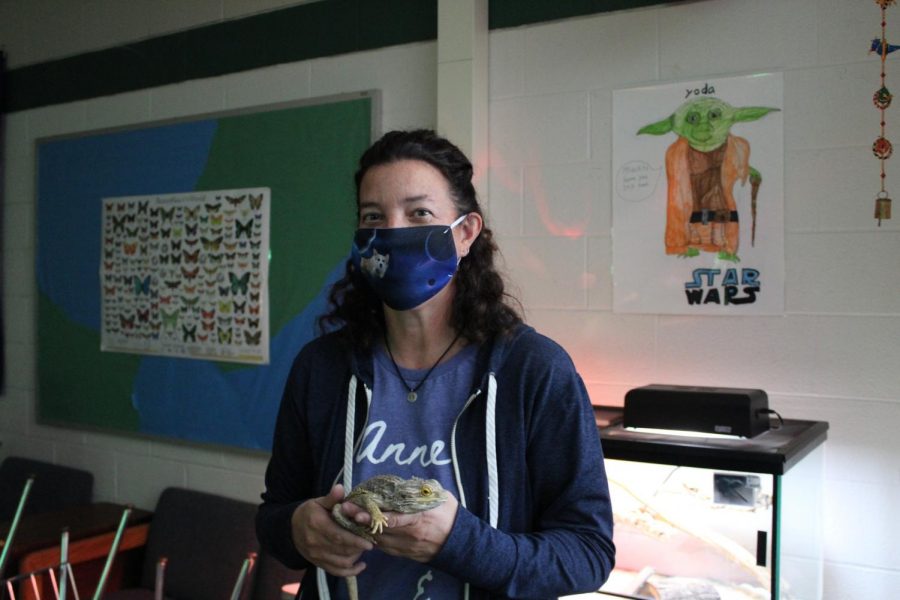Two places at once: how new AP Lang teacher Anne Keller is adjusting to the challenges of hybrid learning
Amidst the chaos of hybrid learning during a pandemic, the tough transition from teaching middle school to high school, and a new position in the unfamiliar FHC building, AP Lang teacher Dr. Anne Keller had only a few things to keep her mind at bay throughout these troubled waters of unfamiliarity.
Her bearded dragon was one of these treasured things, which remains perched in a glass box throughout the day—except for when it keeps students company at their desk, because animals need breaks, too.
But besides her dragon and other animal-related items strewn about her classroom, Keller found a community composed from this chaos before her official first day even began.
Landing the position of one of the AP Lang teachers many months ago, Keller found her way back to a high school setting after teaching elementary and middle school students for the majority of her career. Back to her roots, as high school is where she initially trained to become a teacher, she spent her summer communicating with past AP Lang teachers and even in intensive summer workshops to prepare as best she could for the year ahead—for whatever challenges it may present.
Despite her ample preparedness, nerves were still high, but there was one thing Keller could count on: almost every teacher is in the same boat as her.
“I feel, in some ways, it’s a little bit comforting as most teachers are feeling a sense of uncertainty, unrest, or questioning,” Keller said. “I feel like I’m in good company that way. If it were a typical year and I were just starting a new position like normal, I probably wouldn’t have that same sense of community with the other teachers.”

With a welcoming team of teachers in the English department—such as Robbin DeMeester, who popped in her classroom on a Sunday just to check in—and a communal sense of being a bit lost at sea, Keller found comfort in the fact that, although she was a new hire, she was not alone.
“I feel like everyone’s been extra helpful and really caring,” Keller said, “but it could just be Central High School, or it could just be the English department which is full of really caring people. That’s been a real positive—that sense of caring and community.”
Even with this close-knit and comforting community, and even with an entire summer of preparing for the treacherous challenges that learning in the midst of a pandemic brings, smooth sailing during the first official week of hybrid learning was next to impossible.
“The first couple of days [were] very stressful, and I feel like I did not do a great job,” Keller admits. “I did not set all the right things on my documents so I had about 800 bazillion emails from students. I felt really bad that I [couldn’t] help those students [that were] home, that I can’t be there for all the students [all the time].”
And although students such as junior Katie Wilson understood the intent of the assignments and the directions, the trials and tribulations that hybrid learning presents are sometimes beyond a student’s individual ability to comprehend.
“We had a bunch of different assignments we had to do displayed in this presentation [the first week of school],” Katie said. “The first remote day I was actually pretty confused with everything. I mean, she tried to do it in an easy way, but it was a lot more work than I expected it to be for the first remote day.”
As a full-speed-ahead teacher full of energy and excitement, Keller admits that she was a bit over-zealous the first week and definitely stressed more than one student out, but she also admitted that this year simply is just having to adjust her plans day by day.
Communicating with all her students the expectations of the class, and the best way to reach that seemingly out-of-reach balance between effectively teaching on in-person days and providing enough guidance for the learning that is done at home, Keller very quickly toned down the workload and had productive conversations with her students about their stress load and what they wanted from the class.
“The first day in-person she worked with us to see how we wanted the class to go, which was really helpful,” Katie said. “She got suggestions from us; I said I like being organized with everything, and she incorporated everything we wanted in the class—or at least tried to.”
Taking in her students’ suggestions, Keller’s main priorities are attempting to reach a blissful balance.
“I think, you know, I’m still trying to learn how to do [hybrid teaching] effectively,” Keller said. “I see that some students appear overwhelmed—I feel overwhelmed—so it’s just trying to figure out the best ways to communicate. I want to make sure that what I assign is helping them communicate effectively and not making their lives more stressful. Trying to find that balance has been interesting.”
In addition to these hardships of hybrid learning, Keller has taken note of the difficulties that new safety measures have presented.
As a discussion and conversation-based teacher, having individual desks in rows has thrown Keller into a new world—a world of Google Classroom posts, a lack of physical texts to discuss, and, most importantly, an extreme attention to the safety of her students in class.
“The [hardest] part is these masks and the distancing,” Keller said. “You can’t be as free in conversation or discussion or group work; it’s really impacted the way I teach. I like to be more hands-on and conversational and discussion-based, and with the setup of my room—with the desks all facing forward—it’s just not who I am as a teacher. I’ve gone from my old classroom having four to a table, lots of interacting, to ‘How much is safe?’ always in the back of my head.”
Keeping those never-before-seen adjustments, such as wiping down the desks after each use and maintaining that six-foot distance, in mind, students such as Katie and junior Sharanya Pastapur recognize the added stress on both the teachers and themselves in these unpredictable times of learning.
Even with that hectic first week, Katie and Sharanya can see how engaging and passionate Keller is despite it all.
“She’s very upbeat,” Sharanya said. “She almost gives me [an Honors English 10 teacher Ken] George kind of vibe, where she’s not overly enthusiastic or anything, but [she is] to a good amount that you are listening but are also still excited to be in the class.”
And, after a hectic—but engaging and uplifting—first few weeks, Keller has settled into her new normal: the rows of desks, countless Google Classroom posts, never-ending conversations with students, and, most importantly, her bearded dragon right beside her desk.
While her new normal is not quite perfect yet, she has her community right beside her, and they’re all searching for the key to unlocking the secret of balancing hybrid learning.
“Being two places at once is not easy,” Keller said. “I haven’t figured it out yet, so if you find out from somebody what the secret is, let me know.”

Abby Wright is a senior entering her fourth and final year on staff for The Central Trend, and second year as Editor in Chief. She values art, Spotify...



























































































